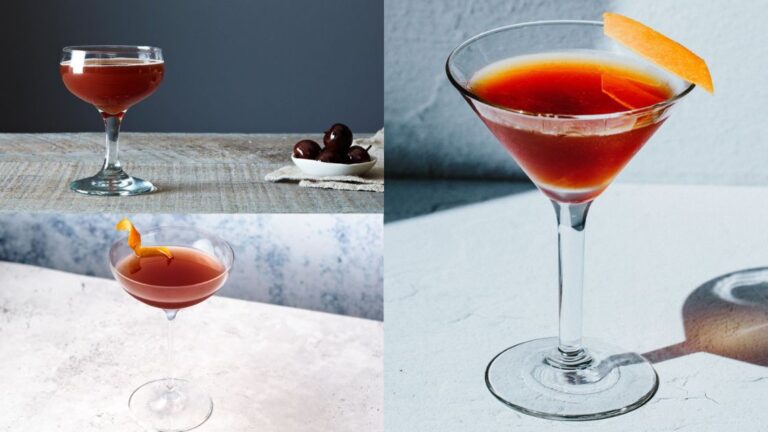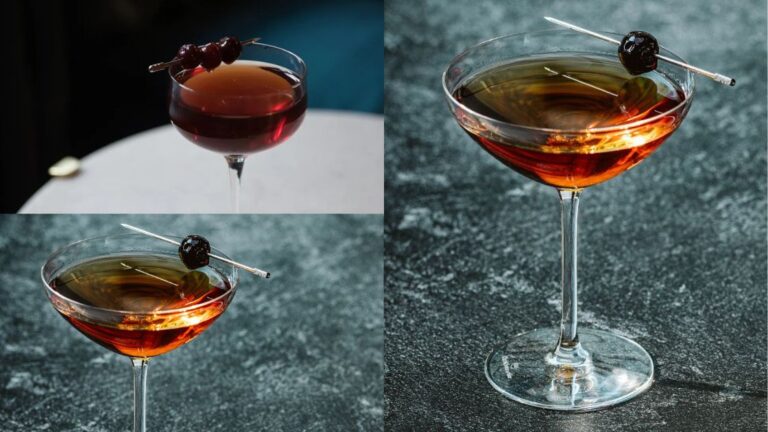Whisky production in Canada boasts a long and storied history, deeply rooted in the fabric of the nation’s cultural heritage. This journey into the world of distilling in Canada began in the early 19th century. The first licensed distillery was established in 1801 in Quebec, marking the beginning of a flourishing industry. Over time, Canadian distillers, leveraging the abundant supply of high-quality grains and pristine water sources, developed unique methods and styles that set their whisky apart.
As the industry matured, Canadian whisky, often colloquially referred to as “rye whisky” regardless of its rye content, emerged as a distinctive spirit. This is partly due to its smoother and lighter profile compared to its counterparts from other countries. The whisky’s character is shaped by the diverse climates and landscapes of Canada, influencing everything from the grain’s growth to the aging process of the spirit.
Throughout the 19th and 20th centuries, Canadian whisky played a pivotal role in North American history. Notably, during the Prohibition era in the United States, Canadian whisky found its way south of the border, both legally and through smuggling, solidifying its reputation and demand in the American market.
Today, Canadian whisky enjoys a reputation of excellence and versatility on the global stage. It has become a prominent player in the international spirits market, prized for its quality and smoothness. The versatility of Canadian whisky makes it a favorite among both connoisseurs and casual drinkers, as it can be enjoyed neat, on the rocks, or as a key ingredient in a wide array of cocktails.
The global reach and popularity of Canadian whisky are not just a testament to its quality but also to the innovation and dedication of its distillers. This spirit has transcended its humble beginnings to become a symbol of Canadian craftsmanship and pride, enjoyed by whisky enthusiasts around the world. As we delve deeper into the nuances that define Canadian whisky, it becomes clear that this beloved spirit is much more than just a drink; it’s a reflection of Canada’s rich history, diverse culture, and the unrelenting spirit of innovation.
Legal Definition and Standards
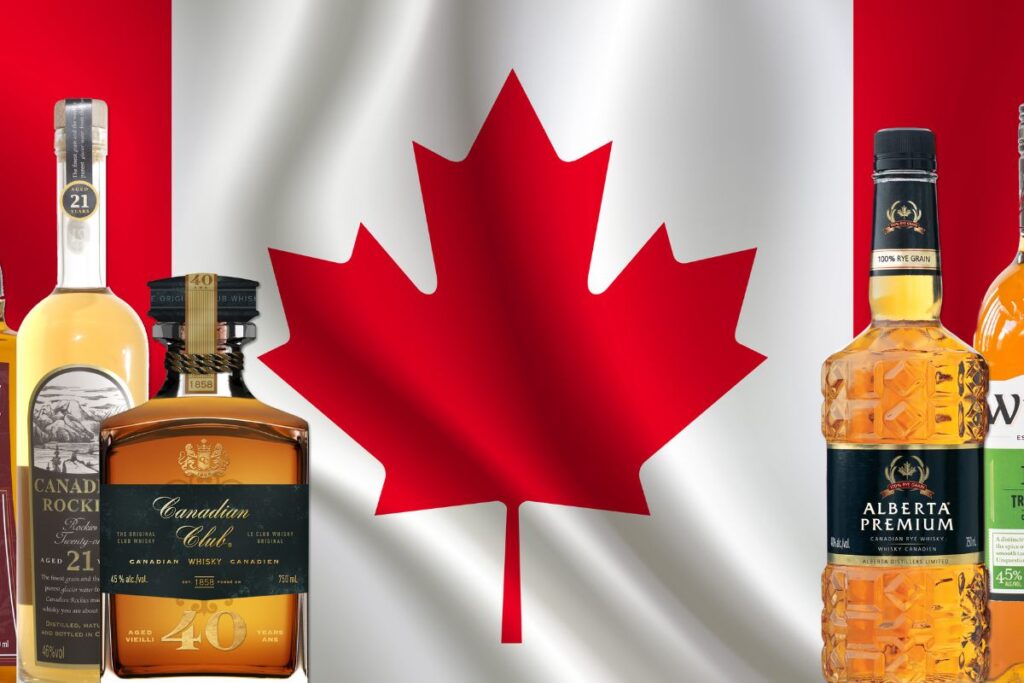
Canadian Laws Defining Whisky
Canadian whisky, often referred to as “Canadian Rye Whisky” due to historical preferences, is governed by stringent laws that ensure its quality and authenticity. According to the Canadian Food and Drugs Act, for a spirit to be labeled as “Canadian whisky,” it must meet several criteria:
- Production: The whisky must be mashed, distilled, and aged in Canada. This ensures that the entire production process, from grain selection to distillation, takes place within the country.
- Aging: It must be aged in small wood barrels (not exceeding 700 liters) for a minimum of three years. The aging process in wooden barrels is crucial for developing the whisky’s character and flavor profile.
- Alcohol Content: The spirit must possess an alcoholic strength of at least 40% by volume. This standard aligns with the global standards for whisky.
- Additives: While Canadian whisky can include caramel and flavoring additives, it must maintain the aroma, taste, and character generally attributed to Canadian whisky.
Comparison with Other Countries
The definition and standards for whisky vary significantly across different whisky-producing countries, notably the USA and Scotland:
- United States: American laws, particularly for Bourbon and Tennessee whiskey, are much more specific about the grain composition (at least 51% corn for Bourbon), the type of barrels used (new, charred oak barrels), and do not allow for flavoring additives. This results in a distinctly different flavor profile, often with more pronounced sweetness and oak notes.
- Scotland: Scotch whisky has its own set of strict regulations. It must be made from malted barley (for Single Malt Scotch), aged in oak barrels for at least three years, and must not include any additives other than water and caramel coloring. The emphasis on barley and the aging process in Scotland results in a range of flavors, from the peaty and smoky to the light and floral.
The legal standards for Canadian whisky reflect a balance between strict quality control and allowing room for creativity and innovation. This flexibility in Canadian regulations, compared to the more stringent rules in the USA and Scotland, provides Canadian distillers with the opportunity to experiment with grains, distillation techniques, and flavor profiles. As a result, Canadian whisky not only adheres to high standards of quality but also offers a diverse and unique spectrum of flavors, making it a distinctive player in the global whisky market.
Distillation Process
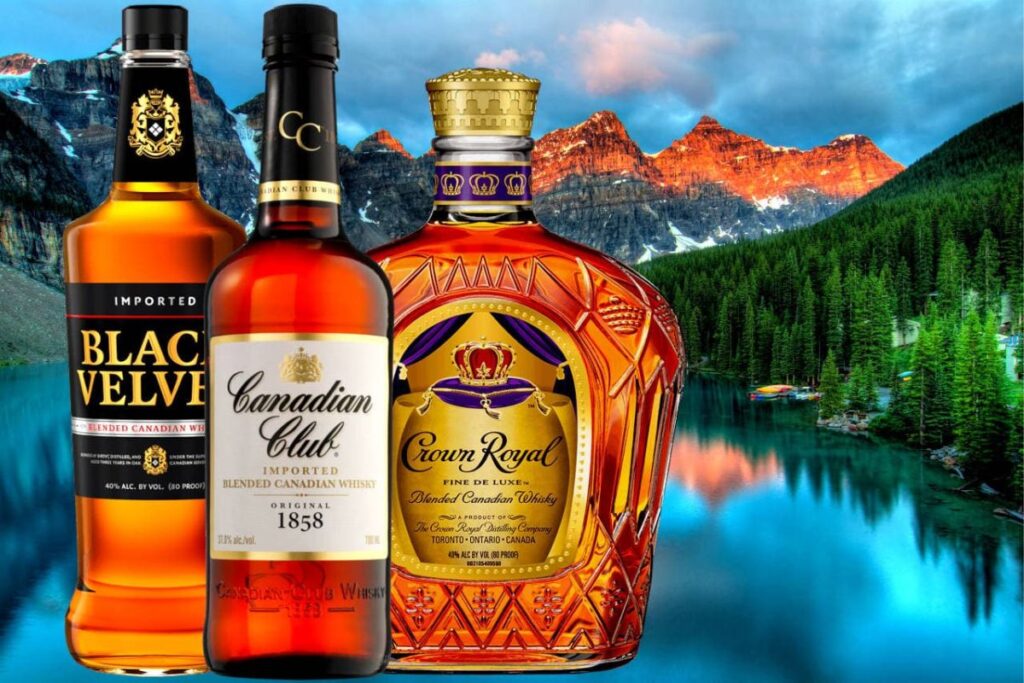
Unique Distillation Techniques of Canadian Whisky
Canadian whisky distillation is characterized by its unique techniques that contribute to the spirit’s distinct flavor profile:
- Grain Selection and Mashing: Unlike many whiskies where a mash bill (a mixture of different grains) is used, Canadian whisky often distills each grain type separately. Grains typically include corn, rye, barley, and sometimes wheat. Each grain is mashed, fermented, and distilled independently, allowing for precise flavor control.
- Distillation Process: Canadian whisky typically undergoes a continuous column still distillation, especially for the base whiskies which are usually made from corn. This method results in a lighter, cleaner spirit. Rye and other flavoring whiskies might be distilled in traditional pot stills, providing richer, more robust flavors.
- Blending: The art of blending is central to Canadian whisky. After distillation, the different grain spirits are aged separately and then blended. This blending process, often done by skilled blenders, allows for a complex and nuanced flavor profile, combining the smoothness of corn whisky with the spicy notes of rye and the richness of barley.
Aging Process and Regulations
The aging process is another critical aspect of Canadian whisky production:
- Barrel Types: While there is no strict regulation on the type of wood for the barrels, most Canadian whiskies are aged in either new or reused oak barrels. The choice of barrel has a significant impact on the flavor, with new oak providing more robust woody and vanilla notes, and reused barrels offering a subtler influence.
- Aging Duration: Canadian law mandates that all Canadian whisky must be aged for a minimum of three years in barrels, though many distillers choose to age their whiskies for longer to develop more depth and complexity. During this time, the whisky undergoes significant chemical changes, gaining color, flavor, and character from the wood.
- Climate Impact: Canada’s diverse climate, with its cold winters and warm summers, plays a crucial role in the aging process. The temperature variations cause the whisky to expand and contract within the barrels, enhancing the interaction between the spirit and the wood, thereby intensifying the extraction of flavors.
- Regulatory Flexibility: Canadian regulations are less prescriptive about the specifics of the aging process compared to other countries. This flexibility allows distillers to experiment with different barrel types, aging durations, and blending techniques, contributing to the wide variety of styles and flavors found in Canadian whisky.
The distillation and aging process of Canadian whisky is a fine balance of tradition and innovation. The unique distillation techniques, the art of blending different grain spirits, and the nuanced aging process all contribute to the distinctive character of Canadian whisky. This combination of careful craftsmanship and creative liberty underpins the reputation of Canadian whisky as a smooth, versatile, and high-quality spirit on the world stage.
Iconic Brands and Distilleries
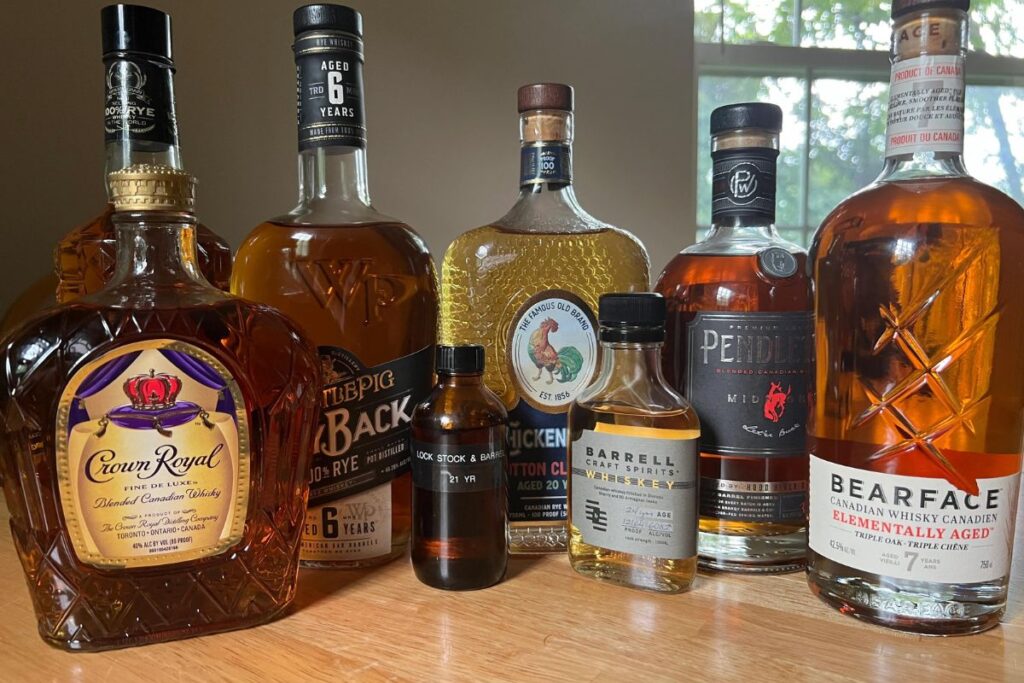
Notable Canadian Whisky Brands and Their Historical Significance
- Crown Royal: Perhaps the most recognizable Canadian whisky brand globally, Crown Royal was first created in 1939 to honor the visit of King George VI and Queen Elizabeth. Known for its smoothness and rich flavor profile, Crown Royal has become synonymous with Canadian whisky excellence.
- Canadian Club: Originating in 1858, Canadian Club holds a storied place in whisky history. It gained fame during the Prohibition era in the United States, where it was a sought-after commodity for its quality. Canadian Club is noted for its light and smooth taste, a hallmark of classic Canadian whisky.
- Forty Creek: A relatively newer entrant, founded in the 1990s, Forty Creek quickly established itself with its innovative approach to whisky making, including the use of unique barrel finishes. It represents the modern evolution of Canadian whisky.
- Seagram’s: Once the largest distiller of alcoholic beverages in the world, Seagram’s has a rich history dating back to 1857. Its VO brand is a classic example of Canadian blended whisky, known for its versatility.
- Gibson’s Finest: With roots tracing back to the early 1830s, Gibson’s Finest is renowned for its rich, full-bodied flavor, attributed to its long aging process in oak barrels.
Regional Influence on Whisky Production
The diversity of Canada’s landscape and climate plays a significant role in the character of its whisky:
- Ontario: Home to some of the most historic distilleries, Ontario’s moderate climate and access to quality grains make it a prime location for whisky production. Brands like Canadian Club and Forty Creek are examples of Ontario’s influence on Canadian whisky.
- Quebec: Quebec’s colder climate and unique French-Canadian heritage have inspired a range of innovative distilling techniques and flavor profiles, contributing to the diversity of Canadian whisky.
- Alberta: Known for its vast fields of rye and barley, Alberta contributes significantly to the grain-forward flavors in Canadian whisky. The province’s colder temperatures are ideal for a slow, nuanced aging process.
- British Columbia: BC’s mountainous terrain and coastal influences have encouraged smaller craft distilleries to experiment with local ingredients and unique aging conditions, adding to the spectrum of flavors in Canadian whisky.
- Manitoba: As the home of Crown Royal, Manitoba plays a crucial role in the production of one of Canada’s most iconic whisky brands. The province’s extreme temperature fluctuations are believed to enhance the aging process, creating richer, more complex flavors.
Canadian whisky’s iconic brands and regional diversity paint a picture of a spirit deeply intertwined with the nation’s history and geography. From the storied brands that have become household names to the regional characteristics that shape their flavors, Canadian whisky is a testament to Canada’s rich cultural tapestry and its enduring legacy in the world of spirits.
Innovation and Contemporary Trends

Recent Trends in Canadian Whisky Production
- Experimental Aging Techniques: Canadian whisky producers have been experimenting with various barrel types to age their whiskies, including using barrels that previously held different spirits or wines. This experimentation imparts unique flavor profiles, such as hints of sherry, port, or even tequila, adding complexity and depth to the traditional Canadian whisky taste.
- Flavor Innovation: There’s a growing trend towards flavor innovation, where distillers are experimenting with different grain types and blending techniques to create new and unique flavor profiles. This includes the use of non-traditional grains, such as quinoa or triticale, and the incorporation of additional flavoring elements during the distillation process.
- Cask Strength and Non-Chill Filtered Releases: Following global trends, some Canadian distilleries are releasing cask strength and non-chill filtered whiskies. These practices offer a more robust and unadulterated flavor experience, appealing to whisky enthusiasts seeking a more intense and pure flavor.
- Sustainable and Organic Production: There is an increasing focus on sustainable and organic whisky production, with distilleries emphasizing locally sourced grains and eco-friendly practices. This shift not only appeals to environmentally conscious consumers but also often results in a whisky with a unique, local character.
Impact of Craft Distilleries
- Diversity in Styles: The rise of craft distilleries in Canada has led to a significant increase in the diversity of styles and flavors available in Canadian whisky. These small-scale producers often take a more artisanal approach, experimenting with different fermentation, distillation, and aging processes.
- Local and Artisanal Appeal: Craft distilleries often focus on the ‘terroir’ – using local ingredients and showcasing local flavors. This approach has fostered a sense of community and pride, with many craft whiskies becoming representative of their region’s character and heritage.
- Innovation and Experimentation: Craft distilleries are at the forefront of innovation in the Canadian whisky industry. They are more agile and willing to take risks, trying out new techniques and pushing the boundaries of traditional whisky production.
- Economic and Cultural Impact: The growth of craft distilleries has had a positive economic impact on local communities, creating jobs and attracting tourism. It has also contributed to the global image of Canadian whisky as a dynamic and evolving spirit.
The Canadian whisky industry is experiencing a renaissance, driven by innovation and experimentation. Both established distilleries and new craft producers are contributing to this movement, redefining the traditional boundaries of Canadian whisky. From experimental aging methods to the rise of craft distilleries focusing on local and sustainable production, Canadian whisky is not only preserving its rich heritage but also boldly stepping into the future, creating exciting possibilities for whisky enthusiasts around the world.
Global Market and Export
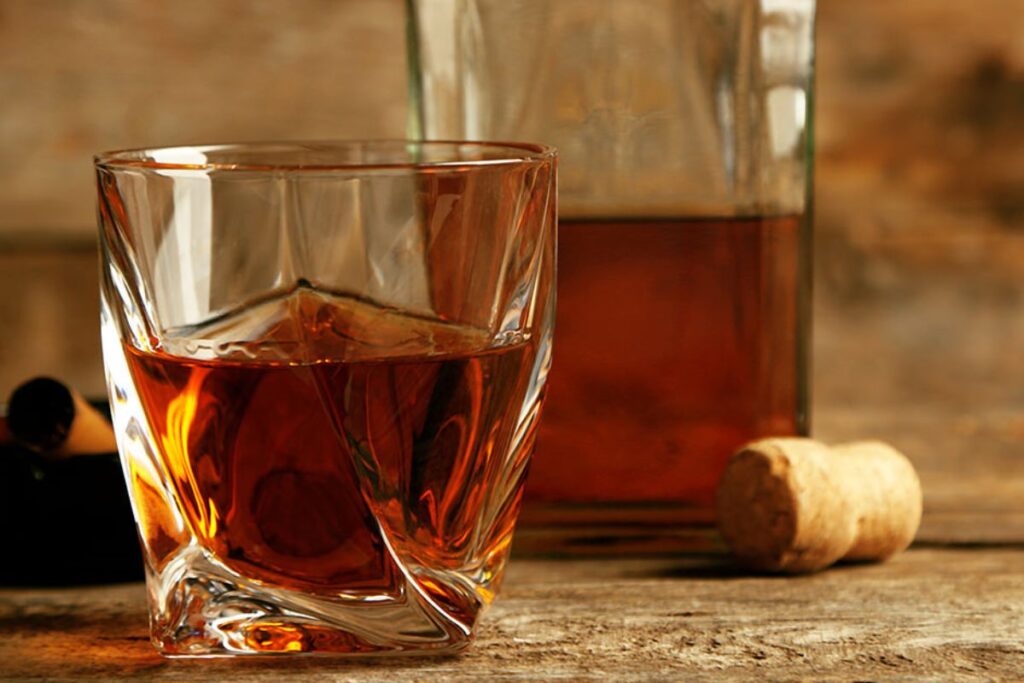
Canadian Whisky’s Presence in the Global Market
- Market Share and Growth: Canadian whisky holds a significant share in the global whisky market, known for its smoothness and approachability. Over recent years, the international demand for Canadian whisky has seen steady growth, partly driven by a growing interest in premium spirits and the global craft spirits movement.
- Key Export Markets: The United States remains the largest and most crucial market for Canadian whisky exports. However, there’s increasing interest in other regions, including Europe and Asia, where consumers are exploring beyond traditional whisky offerings.
- Brand Recognition: Iconic brands like Crown Royal and Canadian Club have played a pivotal role in establishing Canadian whisky’s reputation globally. Their widespread availability and consistent quality have made them ambassadors of Canadian whisky on the world stage.
- Premiumization Trend: There is a growing trend towards premiumization in the whisky market, with consumers seeking higher-quality, artisanal spirits. Canadian distillers have responded by producing more premium and ultra-premium expressions, which are gaining traction in international markets.
Export Trends and International Reception
- Export Volume and Value: The volume and value of Canadian whisky exports have been on an upward trajectory. High-quality, well-aged expressions are particularly sought after, reflecting a global trend towards more premium spirits.
- Diversification of Exports: Canadian whisky producers are increasingly diversifying their export strategies, targeting emerging markets where there is a growing appetite for premium spirits. This includes countries in Asia-Pacific and Latin America.
- Challenges and Opportunities: One of the challenges in exporting to new markets is the competition from other types of whisky and spirits. However, Canadian whisky’s unique flavor profile and the reputation for quality provide a competitive edge. The industry also sees opportunities in leveraging Canada’s positive international image to promote its whisky.
- Cultural and Flavor Adaptation: In some markets, Canadian distillers are adapting their products to suit local tastes and preferences. This includes experimenting with different aging techniques and flavor profiles to cater to specific regional palates.
- Reception at International Competitions: Canadian whiskies have been receiving increasing recognition at international spirit competitions, winning awards and accolades. This recognition has helped to elevate the status of Canadian whisky in the eyes of global consumers and experts alike.
The global market and export landscape for Canadian whisky is one of both challenge and opportunity. With a strong foundation in key markets like the United States and emerging interest from around the world, Canadian whisky is poised for continued growth. The industry’s focus on premiumization, innovation, and adapting to local tastes is key to its international success, helping to solidify Canadian whisky’s place on the global spirits stage.
Pairing and Consumption

Tips on How to Enjoy Canadian Whisky
- Neat or On the Rocks: To fully appreciate the flavor profile of Canadian whisky, many enthusiasts recommend trying it neat or with a few ice cubes. This allows the subtle nuances of the whisky to shine through, especially in premium, aged varieties.
- With Water or Soda: Adding a small amount of water can open up the flavors of the whisky, making it more approachable for those who find it too strong neat. Mixing with soda is also a popular choice, as it makes for a refreshing and easy-to-drink beverage while still retaining the whisky’s character.
- Food Pairing: Canadian whisky pairs well with a variety of foods. Its smoothness complements rich, fatty meats like barbecue ribs or steak. The spicier rye whiskies can offset the sweetness of caramelized onions or roasted vegetables. For a cheese pairing, try it with aged cheddar or gouda, which match well with the whisky’s complexity.
- Temperature Considerations: Serving Canadian whisky at room temperature is generally recommended. However, chilling it slightly can also be pleasant, especially during warmer weather.
Popular Canadian Whisky Cocktails
- The Classic Canadian Rye & Ginger: A simple yet beloved cocktail, mixing Canadian rye whisky with ginger ale. The spicy notes of the rye are beautifully complemented by the sweet and sharp ginger ale.
- Manhattan: A traditional cocktail that works wonderfully with Canadian whisky. The whisky’s smoothness pairs well with the sweet vermouth, and a dash of bitters adds complexity.
- Whisky Sour: A mix of Canadian whisky, lemon juice, sugar, and optionally, egg white. The cocktail is a perfect balance of sweet, sour, and strong, showcasing the versatility of Canadian whisky.
- Old Fashioned: Made with Canadian whisky, a sugar cube, bitters, and a twist of orange or lemon peel. This cocktail highlights the whisky’s flavor profile and is a classic choice for whisky aficionados.
- Maple Whisky Cocktail: A uniquely Canadian twist on whisky cocktails, combining Canadian whisky with maple syrup, adding a quintessentially Canadian flavor to the drink.
Enjoying Canadian whisky is an experience that can be tailored to personal preferences, whether sipping it neat, enjoying it in a cocktail, or pairing it with a meal. The versatility and smoothness of Canadian whisky make it a great spirit for both novices and seasoned whisky drinkers. Experimenting with different consumption methods and pairings can reveal the many layers and complexities of Canadian whisky, highlighting why it is a cherished spirit worldwide.
Conclusion
Canadian whisky stands apart in the world of spirits due to its distinctive characteristics and the rich heritage it embodies. Key factors that set it apart include:
- Flexibility in Production: The Canadian whisky industry is marked by its flexible regulations, allowing for a wide range of grains, distillation methods, and aging processes. This flexibility has fostered a spirit of innovation among distillers, contributing to a diverse range of flavors and styles.
- Unique Flavor Profile: Canadian whisky is celebrated for its smooth, light, and approachable profile, often with subtle rye spice notes. This makes it both a favorite for whisky newcomers and a versatile base for cocktails.
- Craftsmanship and Blending Artistry: The art of blending different grain whiskies is a hallmark of Canadian whisky, showcasing the skill and craftsmanship of its producers. This results in a balanced and harmonious spirit that maintains a consistently high quality.
- Historical Significance: The history of Canadian whisky, intertwined with the nation’s past, adds to its allure. From its rise during Prohibition to its current global presence, Canadian whisky carries a legacy that enriches its appeal.
Looking ahead, the Canadian whisky industry appears poised for continued growth and evolution:
- Expansion in Global Markets: As Canadian whisky continues to gain recognition, its presence in international markets, especially in emerging economies, is likely to expand.
- Continued Innovation: The trend towards innovation, especially among craft distillers, will likely continue, further enriching the Canadian whisky offering with new flavors and styles.
- Sustainability Focus: With a growing global emphasis on sustainable and ethical production, Canadian distilleries may increasingly adopt practices that highlight environmental stewardship, appealing to a more eco-conscious consumer base.
- Premiumization Trend: The shift towards premium and ultra-premium spirits is expected to persist, with Canadian whisky producers likely to introduce more aged and artisanal expressions.
- Cultural and Heritage Promotion: Canadian whisky, deeply rooted in the nation’s history and culture, may see a stronger emphasis on its heritage as part of its global branding, reinforcing its unique identity in the world of spirits.
In conclusion, Canadian whisky, with its rich heritage, distinctive production methods, and innovative spirit, occupies a unique position in the world of spirits. As it adapts to changing market trends and consumer preferences, the Canadian whisky industry is well-placed to not only maintain its strong legacy but also to forge new paths and reach new heights in the global spirits arena.

